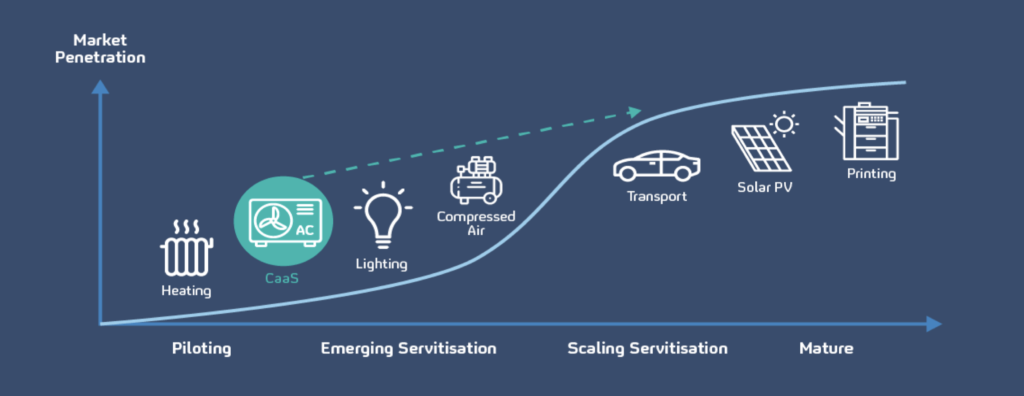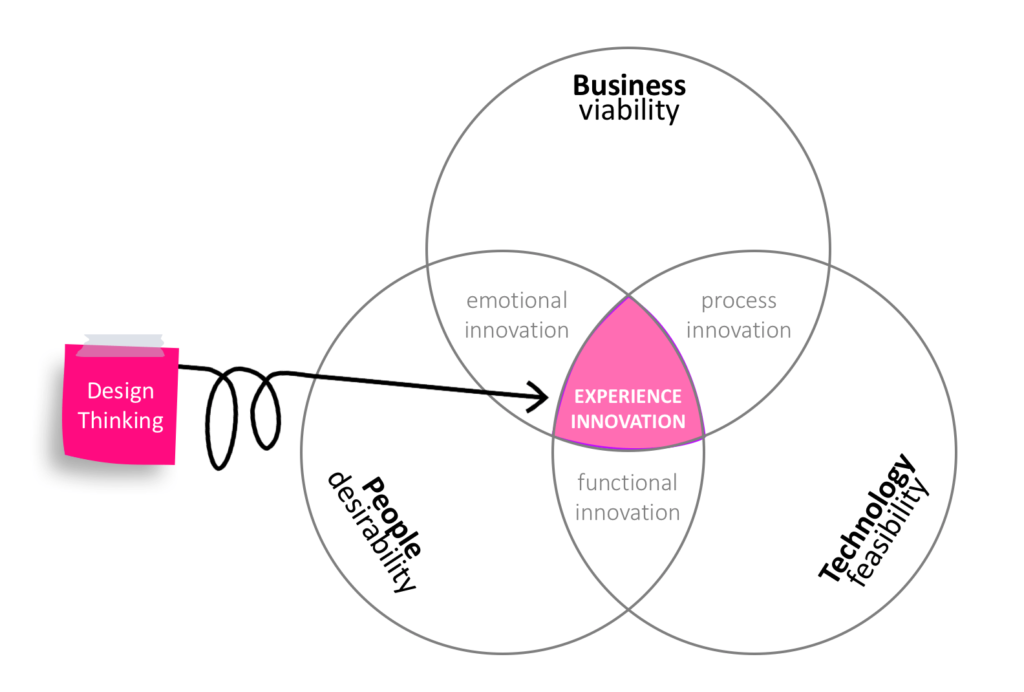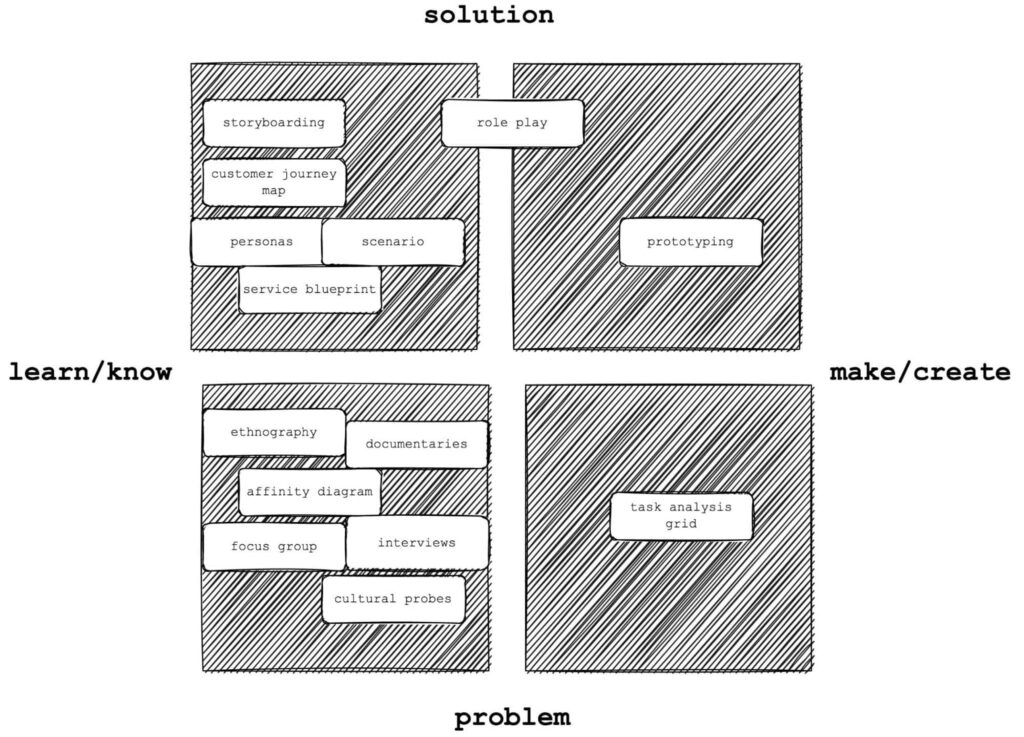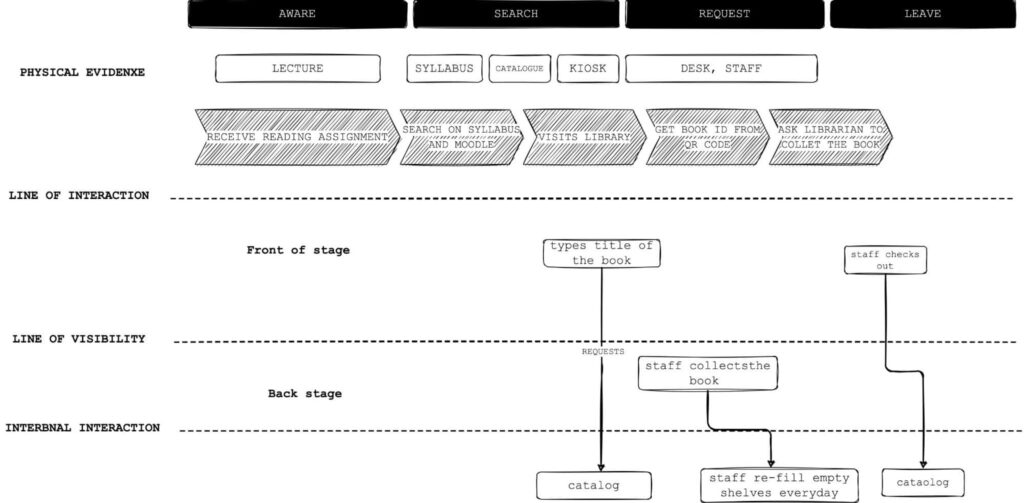Why Service Design Matters Now More Than Ever
We all know what a service does in broad strokes, don’t we? It helps us do something else, like achieve a goal or perform a task.
Yet services are ubiquitous and elusive at the same time – we interact with a host of them daily, but can we say we know how they work and what lies behind their surface? Probably not! Many people are at their wit’s end when defining the term.
The irony is that the “service economy” is in full swing and grows ever complex. Now that virtually every product has a service component attached to it, and with technology continuously disrupting the playing field, the time is now for brands to develop a service “literacy”.
Not surprisingly, Service Design is in increasingly high demand. Forward-looking organisations have been eyeing this speciality for some time now to improve their customer journeys, better their products, and build more resilient internal processes and workflows.
This article looks at the prevailing principles of Service Design, the benefits that it can bring to businesses and brands, and some handy tools and techniques.
Table of Contents
What do services look like today?

First off, before delving into the art and science of Service Design, it’s vital to pin down what services have become today.
Services have existed since the year dot – think about your local post office, rather than someone coming over to your house to clean the garden.
However, the second half of the XX century marked a new era of relentless servitisation.
Companies have been moving their commercial focus from the mere product to a marketable set of products and services, able to fulfil customers’ needs jointly. And in this process, services have ended up playing the lion’s share.
It was a paradigmatic shift that today, in the most advanced countries, services account for the most significant share of GNPs and have transformed users’ lifestyles in radical new ways.
We’ve got used to applications and systems, which are transposing, in an online setting, activities that in the past we would have carried out solely in the physical world.
Services today look like subscribing to an online florist to get fresh bouquets regularly delivered to our homes.
They look like they perform transactions on a digital banking platform rather than making the road to the local branch.
Or like taking a VR tour of our dream mansion as we look for a new house from the comfort of the sofa.
Brands have been creatively exploiting the appeal and novelty of services, often in the wake of new technological breakthroughs, to differentiate from competitors.
Nike and Adidas’ running clubs are notorious examples of services that add value to the traditional core business by tapping into more specific user needs.
The Boots Health Hub leverages a nationwide network of specialists to provide customers with a range of online health and wellness services in the UK. This somehow helps expand its brand reach beyond the physical precinct of its pharmacies.
As the scope of services keeps expanding, companies are also confronted by the immense complexity of the tech playing field.
Technological innovation has opened up entirely new avenues via which to pursue service transformation, providing interesting tools to instrumentalise – Big Data, Blockchain, Virtual and Augmented reality, to name a few.
With them comes a raft of intricate policies and regulations that all service providers must abide by if they want to operate on the World Wide Web.
How do we create leading-edge services in an already frantic scenario rife with opportunities and tremendous challenges?
How to design excellent services

All typical services today have a couple of things in common:
- They are a ‘whole’ made up of different parts.
- They exist to serve a user’s goal.
Drawing from the two observations above, great contemporary Service Design is the one that conflates
- A “system thinking.”
- An unflinching focus on the human component of the service
There are several frameworks and sets of principles that aim at describing the foundations of Service Design, notably the design4services “manifesto”, Marc Stickdorn and Jacob Schneider’s six principles of service design (from their book This is Service Design Thinking) and Lou Downe’s 15 pillars of Good Services.
These guiding references are grounded in the two core mentioned above abilities, so it is worth expanding on them.
1 – System thinking
A siloed approach to services just can’t cut it in the complex digital era.
Before the Internet came along, the inherent complexity of our everyday experiences was significantly lower.
The digital revolution has brought about massive benefits, but, on the flip side, our interactions with spaces, people and physical objects have become more mediated by technology than ever before. On the whole, they have grown significantly sophisticated!
Juggling all of the things that make up modern services requires a holistic standpoint, problem-solving capabilities, and loads of creativity.
A holistic standpoint allows designers to go beyond the single components of the service and frame the end-to-end user experience across all touchpoints.
This means considering all the different technologies and resources involved – and partnering with the organisations that provide them.
This hasn’t always been the case: as I said before, services before the Internet used to be a little simpler.
But Service Design rapidly responds and adapts to present challenges, leveraging that “big-picture mindset” typical of design thinking in general.
Problem-solving capabilities help designers face the unknowns from a context in flux.
Think about the fresh bout of regulatory efforts that led to the enforcement of data protection rules in Europe.
Organisations operating on the Web had to swiftly come to terms with changing laws, which often meant they had to re-design their User Experience and entire parts of their services.
Last but not least, in this brief review, creativity is the secret juice behind excellent, innovative, distinguished services, which can disrupt the market while securing an enduring competitive advantage for a company.
Creativity is mainly about capturing trends in consumer behaviour and seizing the opportunities provided by technology in the service space.
This was the case for the rise of giants like TikTok, Ikea and Uber, although compelling examples come from relatively unknown players.
Vinhood was a startup that nimbly entered the already solid and saturated Italian wine market, putting forward an algorithm-driven recommendation system that could predict individual tastes and guide inexperienced amateurs through the intricacies of oenology.
At its inception, Vinhood’s approach was outstanding and one-of-a-kind. Their unusual Value Proposition hit the headlines in a pretty crowded sector. The company pursued its calm blue ocean and relatively unique positioning by addressing a target audience still overlooked by significant incumbents.

Vinhood.com user experience provides an innovative way for novices to approach the world of wine.
2 – Human-centred perspective
Services do exist for someone to use them. If this sounds a bit like a truism, keep in mind that the history of services is full of worst practices. The solution is built around an organisation’s capacities or the technology available at a particular time rather than what users want, expect, or do.
Great Service Design is the one that encourages businesses to question their assumptions, often to identify unexplored market opportunities which are rooted in real users’ needs.
Perpetuating its fame as a trailblazer and market disruptor, GPS navigation app Waze has been expanding its range of solutions over the years to improve people’s wellbeing and safety on the road. Among its feats, there is a system of alerts designed to prevent adults from accidentally leaving children behind in hot cars, a top concern for any parent.
Tools to tame complexity and foster service innovation
It would be remiss of this brief review to forgo looking into the service design toolbox!
When harnessing the messiness of users’ and organisations’ experiences, Service Design’s multidisciplinary heritage provides practitioners with many methods and tools.
While touching upon all of them would be out of the scope of this article, a model developed by scholars Rui Alves and Nuno Jardim Nunes offers an exciting taxonomy for your reference.

Alves and Nunes’ taxonomy for classifying service design tools (2013)
This matrix presents a clear distinction between tools that are better suited to address the problem-definition phase ( when users’ needs, business viability and technological feasibility are assessed and researched upon) and methods that are deployed instead during the design phase (that is, when the solution is iteratively developed).
Besides, you can use some of these tools to learn more about the problem or the solution. In contrast, others are ideal to practically make/create the solution (and notably, most of the identified methods fall into the learn quadrants!).
Another remit where service design approaches (some better than others) prove massively beneficial is collaboration and communication among cross-functional teams. On this note, there is a couple of tools worth considering.
The Service blueprint
A two-dimensional flow chart depicting the relationships between different service components — people, physical or digital entities, and processes. These components are related to specific touchpoints in the user journey.
Service Blueprints are beneficial in two ways: on the one hand, they double down the value of a classic user journey by adding a backstage standpoint to the customer’s perspective so that at any point, it is evident what’s going on behind the scenes, along with the implications of each singular action on multiple-levels of the service ecosystem.
As reported in a paper by scholars Bitner, Ostrom, & Morgan, service blueprinting encourages “to concentrate on not just the human-to-human but also human-to-technology interactions at the enterprise boundaries”.
(ref. Bitner, Ostrom, and Morgan (2008), A Practical Technique for service innovation)
On the other hand, they are instrumental as a collaborative and communication tool, particularly when a cross-functional effort involving multiple departments is required.
Far from being useful only to account for complex digital systems, blueprints are effectively deployed to chart the interactions within multichannel or primarily “physical” services (restaurants and food service, for instance), as quick browsing through academic and professional literature can show.

A hypothetical service blueprint for a university library service
The Building Partnership Map
Teaming up with the right partners is as essential for the success of a service as it is the design itself.
We can say that forming good partnerships is a component of the service design process! Joining forces among organisations is common practice in the servicescape to increase capability and maximise limited resources.
Among the many tools included in the DIY toolkit developed by Nesta, Quicksand and STBY come a handy worksheet – the Building Partnership Map. It’s a helpful tool to analyse an organisation’s relationship with a given partner and better focus on what’s needed to progress further.
The ratio behind the template is straightforward: any partnership is like a process developing over time and must be purposefully designed and nurtured.

Reference: https://diytoolkit.org/
Developing a service culture: the core capabilities behind successful projects
From what has been highlighted so far, it’s clear that Service Design is a strong field of expertise in its own right, with a unique mindset and a particular set of skills among its fellow design disciplines.
Its growing importance is symptomatic of the fact that today the design of services can’t be left to chance, as it becomes a powerful lever of competitive advantage for businesses and brands at a time when almost 80 per cent of the UK, UE and North American Economy is generated from services.
Whether they choose to develop solid internal capabilities rather than partnering with a competent agency, companies should pursue service literacy no matter what.
For many, this most likely sounds like a daunting task.
A challenge compounded by the fact that, as bluntly put by the former Head of Services at gov.uk, Lou Downe, even designers are often unclear about what good services should look like!
The following non-exhaustive list sums up some core capabilities required to build excellent services. These points come from both field experience and relevant references in the literature.
1 – Designing purposefully.
A service is only worth the effort when it caters to real people’s objective, untapped needs in context. This is the precondition for the business viability of any service.
It calls for empathy and a thorough understanding of a target audience.
2 – Communicating the service clearly to users.
This means ditching a siloed approach and collaborating closely with the marketing and the business units.
Service designers should remember that the viability of a service is closely bound to how the service is promoted and made available to its target audience on the most suitable channels. Branding considerations should also play a role.
Again, the example of Waze is testimony to the appeal of a service that brings together an awareness of human needs, a technological superiority and a consistency of the service with the core business and the brand personality.
3 – Embracing an end-to-end approach.
To join the dots between the different experiences that are strung together to form one seamless service, from the first moment of the user journey to the last.
4 – Understanding what’s going on behind the scenes.
To predict organisational, logistics and technological implications at every touchpoint in the front stage. Blueprints and process flows are practitioners’ best allies for doing so.
5 – Considering also an alternative, non-human actors.
An intriguing article published on the SDN blog challenges the dominant metaphors that service designers rely upon to describe their practice. The author makes a case for a different, broader view of the term “actors”, which has been traditionally associated with all human beings involved in a service.
With emerging technologies on the rise, such as AI and robots, practitioners and researchers in the field should expand their focus to include all those artificial entities that nonetheless are given agency to shape our services soon.
6 – Orchestrating consistently.
Because different organisations (or units within larger organisations) often fulfil different parts of the same service. The challenge is to orchestrate and devise all these single pieces to feel as smooth and seamless as possible for users.
7 – Envisioning feasible possible, and desirable solutions.
And engaging stakeholders in participatory co-creation processes.
8 – Open problem-solving.
Identifying solutions across different logical domains and within uncertain and ambiguous contexts.
9 – Working across multiple logical levels.
Shifting from operative levels to different degrees of abstraction.
10 – Modelling, simulating, visualising and experimenting with possible solutions.
This can happen before all the information is available: it is about leveraging a form to embody ideas and communicate values.
Final thoughts
Services represent exciting, challenging and relatively uncharted terrain for design practitioners.
They are intangible by nature, but they have different tangible entities, like products, people, non-human entities, technological support, physical evidence, processes, policies, and rules—many components that call for organisations’ undivided and holistic attention.
By advocating a human-centred system thinking, deeply rooted in market viability and business requirements, Service Design qualifies as a discipline that can add significant value to solutions developed by both established brands and dynamic new entrants.
Service Design is perhaps the specialism they will rely upon for organisations aiming to create financially sustainable, durable, and instrumental services to strengthen their brand’s perception and positioning.
Author Bio: Silvia Podestà is a Strategic designer and researcher. She's a published author, with a passion for UX, Service Design and Design Thinking. Connect with her via Linkedin https://www.linkedin.com/in/silviapodesta/
